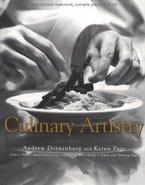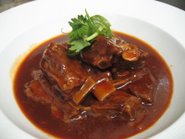In China, specific regions are recognised for their outstanding characteristics. For example there is a common saying that an ideal life would be to born in Suzhou, live in Hangzhou, eat in Guangzhou and to pass on in Liuzhou. Each region is famous for a certain character and Guangzhou with its Cantonese cuisine is specifically recognised as the forerunner for the evolution of Chinese Cuisine around the world. Significantly, it has become a fundamental basis for many chinese chefs to learn the culinary techniques of this cuisine. The region with its fertile plains, bountiful coastal waters and culinary expertise is indeed blessed with its unique recognition as being the culinary paradise of China.
Some restaurants in Guangzhou dates back to more than a hundred years ago and they have become the icons of the local dinning culture. Restaurants like Guangzhou Restaurant广州酒楼, Tao Tao Ju陶陶居, Lian Xiang Lou莲香楼evolve from being tea houses in the earlier days to full fledge Chinese restaurants today. The local people eat 5 meals a day. Morning tea, lunch, afternoon tea, dinner and night tea. These restaurants are opened from 6am each morning and do not close till past midnight. Their total sitting capacity each boast of the the hundreds and thousands per dining session and during peak seasons, it is a non stop flow of chaos. Most people come for dian xin items and the regular chinese wedding banquets can see more than 6-8 families at times celebrating the union of bliss of their love ones. One can imagine the brigade of chefs preparing all the foods in the extensive menus can easily run into a thousand based on the rotating shifts and the number of masterchefs wielding their rolling pins, cleavers, woks and roasting skewers depending on their areas of speciality all united under the watchful eye of the grand culinary masterchef who probably has spent more time in the kitchen than anywhere else in his entire life time. Guangzhou Restaurant, founded in 1925, has itself has contributed to the birth of quite a few of the region, HK and Macau's Chinese masterchefs. Tao Tao Ju has a longer history dating back to its birth in 1880 with its dim sum touted as the best among the three while Lian Xiang Lou boasts of the best tasting Chinese pastries among the three.
By now you probably would have been reading in awe of these three restaurants and must be wondering how their food tastes? The answer is a big disappointment. Substandard fare i would say. The region of Guangzhou must have exported all her best chefs to around the world leaving the mediocore ones behind in the last hundred years teaching on the next generation substandard knowledge. I am not comparing based on the individual chefs best capibility but as in providing a general standard of dinning service and taste to the man in the street. N, myself and mum thought we would find the best experiences in the culinary paradise from these historic restaurants but we were let down by all three places. What is the problem?Are we picky? Not at all. We all scratched our heads after visiting all these three places and realised that many of these historic Chinese restaurants are still stuck in their historic outfits of taste and service standards. In other words, as chinese restaurants and their customers demand in the rest of the world modernise in decor, dinning etiquettes, menus and service standards, these restaurants were left behind with their ever faithful locals with their own clocks coming to a total standstill of the yesteryears. Comparing with traditional cantonese restaurants like Red Star and Dragon Gate in Singapore, Hong Kong Flower Lounge, Yank Sing and Fook Lam in San Francisco and Red Emperor in Melbourne, the three of them are not able to match on food just alone. And these overseas Cantonese restaurants on their own are not even considered as the best in their own respective adopted countries, but rather we were just comparing apples with apples.
As for service, don't even bother in these three restaurants. In peak dinning hours, as many as three groups of dinning guests can be seated on one big dinning table. The bosses don't get it. With smaller families in recent years, they should start having more smaller tables to accomodate the growth in this segment of dinning customers. Rather it has been accepted to the local dining culture and the whole process goes like this if u are in groups of 2-4pax. Chances are u will be seated with another group sharing the same big table and lazy susan, and should there still be an available space, they will slot in the regular lone ranger as well. It's like the table will have PAP, WP, SDP and maybe an independent candidate to add on to the chaos of the foods served. I am not against table sharing but not at the expense of maximising all available space and sacrificing the customers dining comfort. The dinning experience is totally ruined if u represent the non smoking party because the rest of them will be happily puffing away their Double Happiness cigarettes before, during and after the course of their dinners including those in the neighbouring tables.
Btw, did I mention that we were able to hear all their topics on family, party and work politics thoughout our entire meal with a shower blessing of saliva thrown in for good measure??
Subscribe to:
Post Comments (Atom)









.jpg)

















































































No comments:
Post a Comment